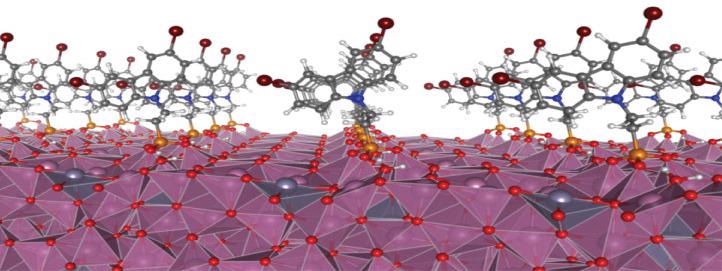Jun 11 2021
Researchers from King Abdullah University of Science & Technology (KAUST) have found that the performance of an organic photovoltaic cell can be considerably enhanced with an electrode coating that is just a single molecule thick.

KAUST scientists have developed an organic solar cell with an electrode coating just one molecule thick that outperforms the most common photovoltaic cells. Image Credit: Adapted from Lin et al. (2021).
This coating can outperform even the leading material presently used for this task and could pave the way for more improved devices that depend on organic molecules, like photodetectors and light-emitting diodes.
Organic photovoltaic cells (OPVs) depend on a light-absorbing layer of carbon-based molecules, unlike the common photovoltaic cells that use crystalline silicon to harvest light. OPVs could be cheaper and easier to produce at a very large scale with the help of printing techniques, however, they are yet to match the performance of silicon cells.
When light penetrates a photovoltaic cell, its energy releases a negative electron and leaves behind a positive gap, called the hole. Subsequently, different materials gather electrons and holes and direct them to different electrodes to produce an electric current.
OPVs use a material known as PEDOT: PSS, which facilitates the transfer of generated holes into an electrode. But PEDOT: PSS is acidic, costly and can degrade the performance of the cell over time.
The KAUST researchers have now come up with a better alternative to PEDOT: PSS. They have used a relatively thinner coating of a hole-transporting molecule, known as Br-2PACz, which adheres to an indium tin oxide (ITO) electrode to create a single-molecule layer. The organic cell that was using Br-2PACz achieved a power conversion efficiency of 18.4%, whereas only 17.5% was reached by an equivalent cell using PEDOT: PSS.
We were very surprised indeed by the performance enhancement. We believe Br-2PACz has the potential to replace PEDOT: PSS due to its low cost and high performance.
Yuanbao Lin, PhD Student Team Member, KAUST
The cell efficiency increased with Br-2PACz in several ways. When compared to its rival, Br-2PACz led to improved hole transport, caused less electrical resistance, and enabled more light to shine through the absorbing layer. The structure of the light-absorbing layer was also improved by Br-2PACz and this effect could be associated with the coating process.
The coating may also improve the recyclability of the solar cell. The team also noted that the ITO electrode could be taken off the cell, stripped of its coating and then reused as a new one. On the other hand, PEDOT: PSS roughens the ITO surface so that it gives a poor performance if reused in another cell.
We anticipate this will have a dramatic impact on both the economics of OPVs and the environment.
Thomas Anthopoulos, Study Lead, KAUST
Journal Reference:
Lin, Y., et al. (2021) 18.4 % Organic solar cells using a high ionization energy self‐assembled monolayer as hole extraction interlayer. ChemSusChem. doi.org/10.1002/cssc.202100707.